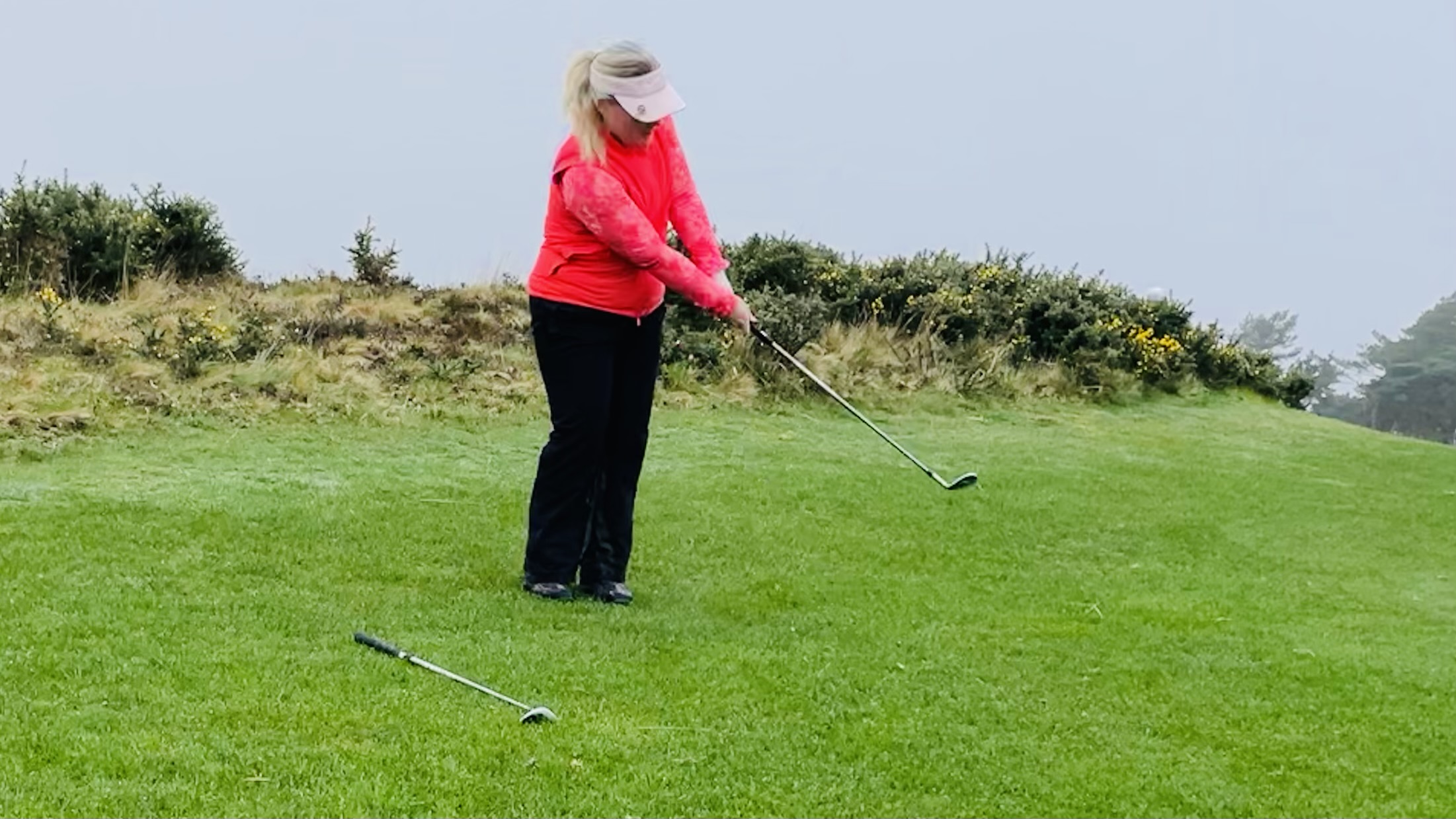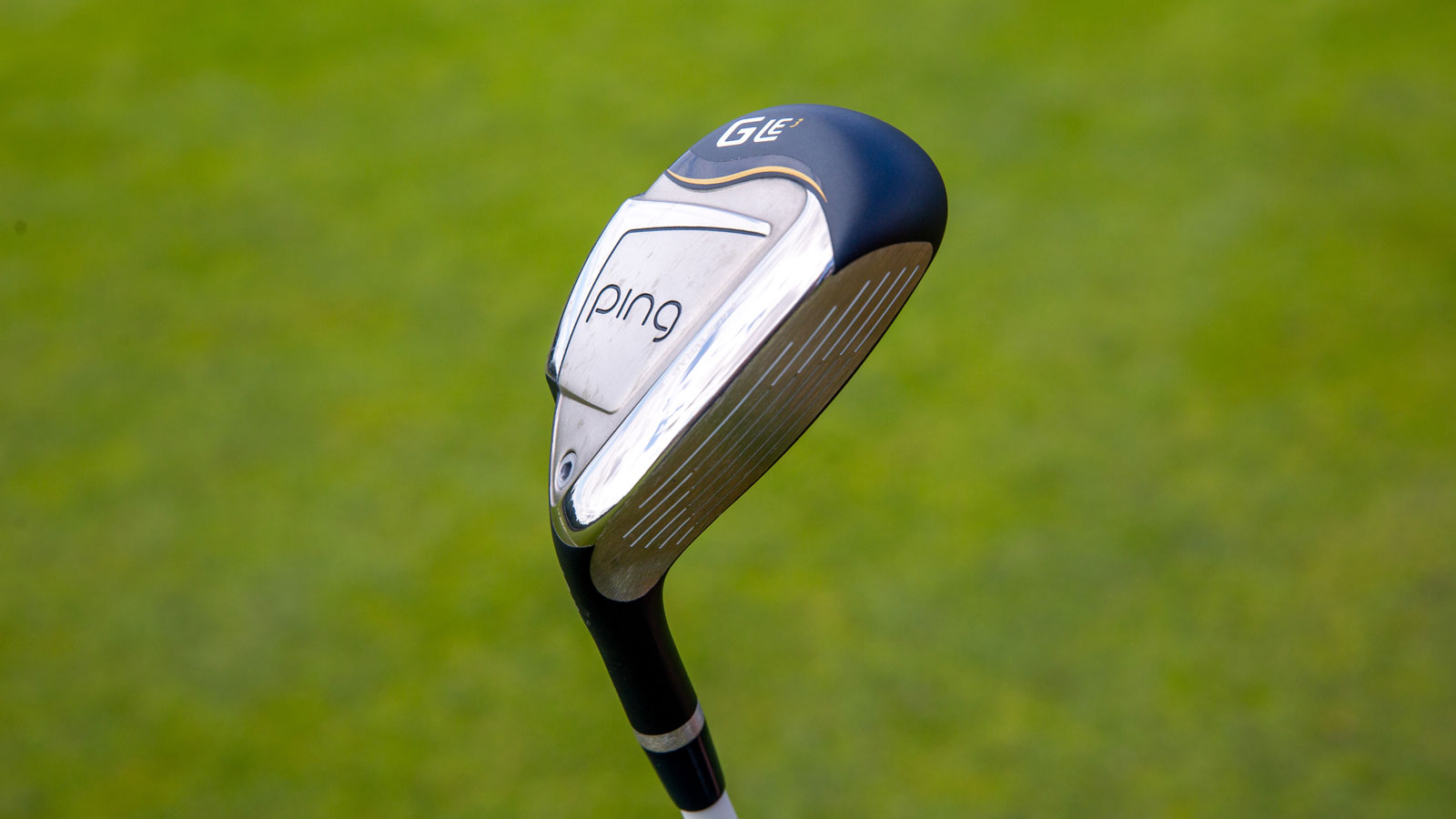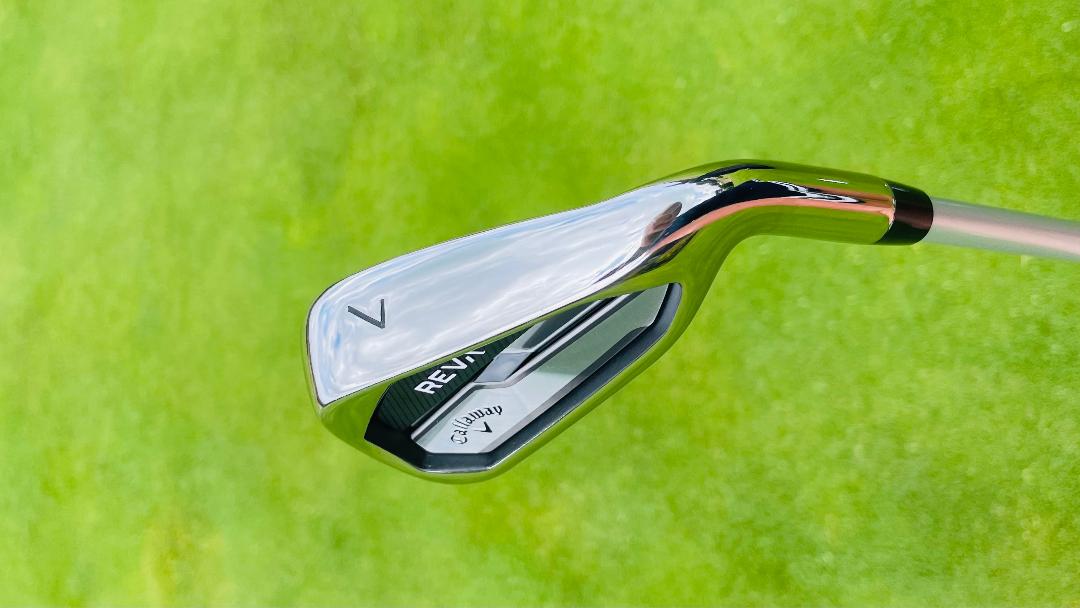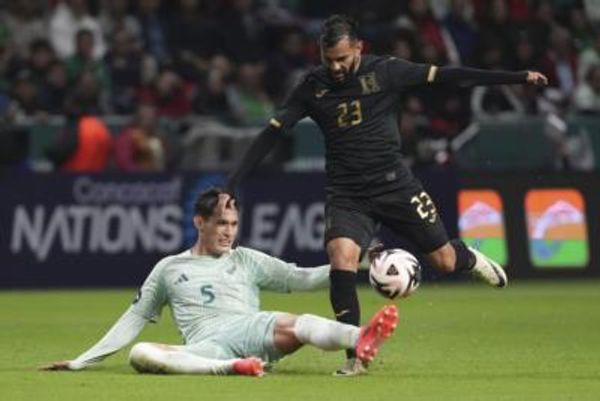
There was a time when golf club manufacturers would simply take a men’s iron and just put a woman’s shaft in it and stamp it 'ladies'. Very little thought was given to a woman’s iron design except to change the colour and the flex of the shaft or at best also adjust the weight of the head.
Nowadays, the main equipment manufacturers design bespoke sets of women’s irons in intricate detail and offer options that cater for every woman from the entry level player to the Tour professional.
The standard woman’s iron is made with the stereotypical swing traits of the average woman playing golf in mind. As we naturally have a slower swing speed than men our irons require lighter shafts and more lofted heads to help get the ball airborne. But that’s just two points to consider.
There are many more factors to throw into the mix to help you make an educated iron purchase, and you might also want to check out our guide on the best irons for women. We’ve broken it down into some simple points below to help you make your irons purchase with confidence, to ensure maximum playability and long-term benefits for your game.
What Shaft?
The shaft is arguably the most important component of the iron, but unless it is suited to your swing speed and technique you won’t be getting the full benefit from the club. The shaft will influence where the club head is at impact. With the wrong shaft you’ll get poor results. The right shaft will help to create the optimum launch conditions (trajectory and spin rate) to get you every yard your swing can deliver. But, just as importantly, it will ensure that the club face is returned square to the ball, improving your accuracy.
Standard women’s irons are stamped with an ‘L’ for Ladies Flex on the shaft. The abbreviation can equally be known as ‘L’ for ‘light’, usually weigh around the 55-69 gram mark, but sometimes as low as 40g. The slower your swing speed and tempo, the lighter the shaft you’ll need. Interestingly there is often a difference between how heavy a shaft feels versus the actual real weight. The combination of shaft and head must match to create a club that feels right for you.

Speed Dictates Shaft Flex
Standard women’s irons are broadly designed for the player with an average swing speed around the 70mph mark. As the average woman swings the club at under 75 mph a lighter shaft is easier to swing fast, helping boost speed and therefore distance. But as no two women are alike, there’s definitely no one-size-fits-all approach.
Shafts should be selected based on how you swing the club. There are options galore and the best solution is to get custom-fitted by a professional expert to make sure that you have a shaft which works with your golf swing and strength.
One of the most recent advances in women’s shafts is the introduction of lightweight shafts that can still have stiffer profiles. These are designed to allow you to swing the clubhead faster without any extra effort. This allows you to maintain control over the clubhead while adding yards to your shots.
Standard vs Custom Fit
Why do standard women’s irons exist? The typical woman will find them easy to use, which keeps things simple from a manufacturing process and marketing perspective.
While there is a justifiable place in the golf market for ‘standard’ when it comes to women’s irons, (especially for entry-level or more casual/occasional players - see our guides on best beginner clubs for ladies and best women's golf sets), if you are really keen to improve and are willing to make a substantial investment in a new set up for irons, then you are going to get the best results from a custom fit.
Whether you are a high handicapper or are the best player in the golf club make sure that your irons work with your swing whatever your skill or experience level.
What Flex?
Standard women’s shafts are L flex but did you know that there is no standard for shaft flexes? Each manufacturer can make their own Ladies flex to whatever they want it to be. One L flex can be entirely different from another, so what shaft flex should women use?
Graphite or Steel?
There’s a common misconception among women that they aren’t strong enough to use steel shafts. In fact, modern steel designs can play just as light as graphite, improving your rhythm and timing. Tour players who choose steel do so because they find the results more consistent for distance control, giving spot-on carry numbers.
Nearly all standard women’s clubs are made with graphite shafts but that doesn’t mean that you should rule steel out if you choose to get your set custom fit.

Club Length
As with flex, there is no standard length for women’s irons, each manufacturer chooses differently. The general rule-of-thumb is that the shorter the shaft the easier it is to control. Longer shafts will produce a wider arc and more potential distance.
If your shafts are the wrong length you will hit bad shots. When clubs are too short impact will usually be on the toe of the club, shots will be hit “thin” or on the bottom of the club face, and the ball flight will tend to veer to the right of the target (for right handed golfers). If your clubs are too long, impact will usually be on the heel of the club, shots will be hit "fat" (hit behind the ball), and the ball flight will be to the left of the target.
These are really important factors to consider if you are a petite (shorter) stature or a tall woman over 5’4”. See our guide on best clubs for petite women.

What About Hybrid Sets?
There’s been a massive move towards women’s sets including hybrids as standard, made up of traditional style short and mid irons (SW-7-iron) and modern hybrid long irons.
These 'rescue' clubs replace the long irons (usually 6 iron up) because they are designed to be much easier to hit. The larger head footprint and generous face makes the long shots into the green easier.
The larger head allows manufacturers to play around with MOI (moment of inertia) lowering the club’s centre of gravity low and deep in the hybrid head to further increase the effectiveness of the club. I carry 3 utility woods, that replace my 4, 3 & 2-iron.
Many women with slower swing speeds than me would benefit from introducing the hybrid around the 6-iron mark so that the 7-iron is the longest they carry in their bag. Simply ask yourself the questions: “How often do you use your long irons?” and “Do you like them or struggle to hit them?” Be honest with your assessment and you’ll have your answers. Remember loft is your friend. When the loft on an iron stops helping you get height and distance, then it’s time to move to a hybrid. Check out our guide on the best women's hybrids.

Set Make-Up & Distance-Gapping
One thing that’s definitely not helping the where-to-start-your-iron-set question is the movement to stronger lofts across all irons today. A decade ago the average loft on a game-improvement 6-iron was 29 degrees. Today, it’s almost 28 degrees … on a 7-iron. Without the requisite clubhead speed, those stronger lofted irons may not produce enough launch to get your shots to land and stay on a green. Hence the more helpful hybrid style irons.
The single most important factor when selecting your iron set make-up is to make sure there are even distance gaps between every iron you carry. 10-15 yards between each is ideal and will prevent you being left with any awkward gaps to fill.
Blade vs Cavity Back
There are two styles of iron head, blade and cavity back. Women’s irons are nearly always cavity back in style as they are much easier to hit than smaller headed blades.
They have a thicker sole to cut through the turf, more offset to help you square the head and hit the ball straighter and a big cavity head style that allows designers to add in features like weight ports and channels to redistribute weight low and deep in the head, make them easier to get airborne.
They can also add in material behind the head to improve feel and get rid of any nasty vibrations from mishits. Blades are seldom seen in the hands of women, even on tour, as they are simply harder to hit.
Traditionalists will tell you they offer better feel and feedback and allow greater shot-making control. But in the modern game its distance and accuracy that matters and this can be achieved using a cavity back with the most consistency.

Grip Size
The grip is the only point of connection between you and the golf club. Having the right grips on your irons to suit your grip pressure, the way you hold the club, and last but in no way least, your finger size can fundamentally change the way you play and your enjoyment of the game.
Women’s standard irons are fitted with undersized (thinner) grips to suit our naturally smaller hands. In reality we don’t all have the same size hands and you only have to look at the website of leading grip manufacturers like Golf Pride to realise that there are actually thousands of options out there.
A simple check…
Figuring out the right thickness grip for you is relatively easy. As a general rule, place your top hand on the grip as you would at address and look at your third and fourth fingers. If you have the correct size you will see the third and fourth fingers just gently touching the palm of your hand. If the grip is too big, then there'll be a gap between your fingers and the palm.
The wrong grip size might be having this effect on your shot shape without you knowing. A the thick grip reduces the amount of wrist rotation intervening in the golf swing. Some tour players who suffer from a hook because of overactive wrists will choose thicker grips to counteract their tendency. And conversely, you'll get players with a slice using thinner grips to get the wrists more involved.








